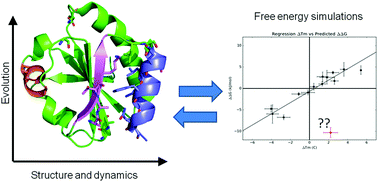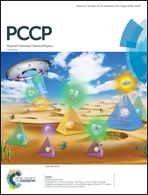Making sense of the past: hyperstability of ancestral thioredoxins explained by free energy simulations†
Abstract
Thioredoxin (Trx), a small and globular protein, is present in all kinds of organisms, from Archea to higher mammals. Throughout evolution, the Trx sequence has undergone subtle modifications to adapt to varying environmental conditions. The high degree of sequence conservation makes Trx very amenable to ancestral protein reconstruction techniques. In this work, we address the study of the structural and energetic determinants of thermostability in E. coli Trx using a dataset of mutations inspired by ancestral reconstruction. We compute, from first principles, the expected contribution of 19 different amino acid substitutions to the stability (ΔΔG) and the melting temperature (ΔTm) of the protein. We also describe the specific changes in structure and protein dynamics responsible for the stabilizing or destabilizing effects of these mutations. Our results point to local and independent changes for most of the variants. Our predictions are accurate enough to substantiate the proposal of new hypotheses regarding evolutionary relationships between mutations, as in the case of T89R, P68A and G74S or K90L and F102A, and reach beyond the initial set to suggest improved variants, such as K90I or K90Y.



 Please wait while we load your content...
Please wait while we load your content...